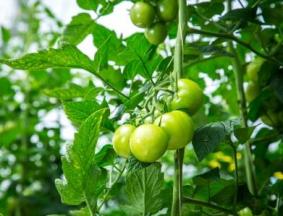A plant consists of 99% carbon, oxygen and water. Major and trace elements make up the rest. Although the nutrients only form a very small part of the plant material, a deficiency in one or more elements can often have serious consequences for the growth and development of the crop.
A plant absorbs the major and trace elements from the soil or substrate in which it is growing. The availability of these nutrients not only depends on the fertilizers provided, but also on the type of soil or substrate and the pH level. However, just because a nutrient is present, this is no guarantee that the plant will absorb enough of it. This depends on the conditions.
Besides pH and EC, climate is also an important factor, since temperature, light and relative humidity determine the rate of evaporation and therefore the uptake and transport of nutrients. The mutual relationship between the various nutrients present also plays a role. Too high a concentration of one element can inhibit the uptake of another. Lastly, the availability and uptake of nutrients are also influenced by microorganisms.
There are two methods of obtaining an insight into the nutrient uptake and nutrient levels of the crop:
Plantsap Check
The plant sap analysis determines the nutrient composition of pressed plant material that has been frozen and thawed. This analysis determines all the nutrients in the sap and the cytoplasm and provides a picture of the uptake of nutrients by the plant. The plant sap analysis is a snapshot, so the results can be influenced by a range of factors. It is therefore important to always take samples at the same time of day. The results are presented in mg/l or mmol/l.
Crop Check
In oven-dried plant material, the dry matter analysis determines both the bound and dissolved nutrients. More information >
More information
| Name | Date | File |
|---|---|---|
| Brochure Nutrient Uptake | 24-01-2021 | |
| Example PlantsapCheck | 11-02-2021 |
Methods
Eurofins Agro analyses samples according to prescribed and established methods. The analysis report briefly describes the method. Here you can also see which method has been accredited by the Accreditation Council. We then put a Q after the method.
The pdf below (in Dutch) contains a detailed description of the methods. This document supplements the information on the analysis report.

